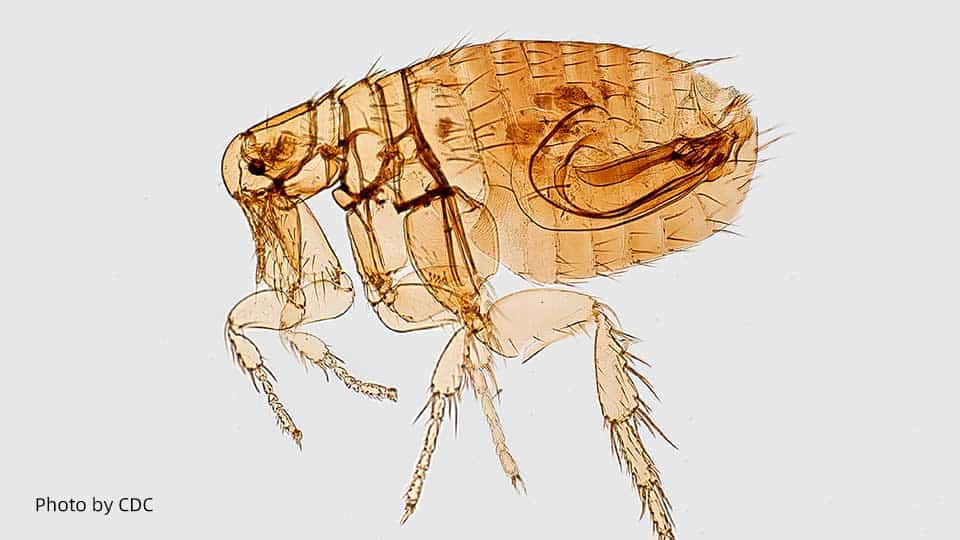Have you ever seen your cat scratch and bite its skin constantly, particularly around the neck, tail, and back legs?
If it continues, you should worry about the fleas problem.
Fleas are a common parasite that can affect your cat’s health, and knowing how to check for them is essential for any cat owner.
In this comprehensive guide, we’ll discuss fleas, how to identify them, and how to tell if your cat has them.
We’ll also cover symptoms of fleas on cats, how to check for them at home, and the fastest ways to get rid of them.
Finally, we’ll address some common questions about indoor cats and the potential risks of flea infestations.
What is a Flea?

Fleas are small, wingless insects that survive by feeding on the blood of their hosts, which can include cats, dogs, and other animals.
They are well-known for their ability to jump long distances relative to their size.
There are around 2,000 different species of fleas, but the most common one affecting cats is the Ctenocephalides felis, also known as the cat flea1.
What Do Cat Fleas Look Like to the Human Eye?
Adult cat fleas are about 1/16 to 1/8-inch long, usually reddish-brown to brown.
They have flat bodies and strong legs, which enable them to jump and move quickly through fur2.
Flea larvae are smaller, translucent, and hard to see with the naked eye.
Flea eggs are even smaller and appear as tiny white specks resembling salt grains.
How Can You Tell If a Cat Has Fleas?
There are several signs that your cat may be infested with fleas, including:
- Excessive grooming, scratching or biting of the skin
- Restlessness and agitation
- Hair loss or bald patches
- Red, irritated skin or scabs
- Small, black specks in the fur, known as “flea dirt” (flea feces)
- Tapeworms (fleas can transmit tapeworms to cats)
- Allergic reactions (some cats are allergic to flea saliva and may develop a condition called flea allergy dermatitis)
If your cat shows any of the symptoms above, you might want to keep an eye on it.
How Can I Check My Cat for Fleas at Home?
Checking your cat for fleas at home is a relatively simple process. Here are the steps to follow:
- Visually inspect the fur. Start by looking for visible signs of fleas or flea dirt. Fleas are most commonly found around the neck, ears, tail base, and groin area. Flea dirt appears as tiny, black specks and may be more easily visible on cats with lighter fur.
- Use a flea comb. A flea comb is a fine-toothed comb that traps fleas and flea dirt. Gently comb through your cat’s fur, focusing on the areas as mentioned above. You may need to hold your cat still or use treats to encourage cooperation.
- Check the comb. After each pass with the comb, check it for fleas, flea dirt, or any debris.
- Test for flea dirt. If you find any black specks, place them on a damp white paper towel or tissue. If the specks turn reddish-brown, they are likely flea dirt, indicating a flea infestation.
- Repeat the process. Continue combing and checking until you have covered your cat’s entire body.
What Is the Fastest Way to Get Rid of Fleas on a Cat?
If you discover your cat has fleas, acting quickly to eliminate the infestation is important. Here are some of the fastest and most effective ways to get rid of fleas on cats:
- Topical flea treatments. Over-the-counter or prescription topical treatments, such as Advantage II or Frontline Plus, are applied to your cat’s skin and can rapidly kill adult fleas3. Always follow the manufacturer’s instructions and consult your veterinarian for any concerns.
- Flea shampoos and dips. Flea shampoos and dips can help kill fleas on your cat, but they may not be as effective as other treatments. Always follow the product’s instructions and avoid using multiple flea treatments at a time.
- Treat the environment. To prevent reinfestation, it’s essential to treat your home and any outdoor areas where your cat spends time. Vacuum thoroughly, wash your cat’s bedding, and use flea sprays or foggers designed for home use. You may also need to treat your yard with a flea control product.
- Preventive measures. Once the infestation is under control, use flea prevention treatments to protect your cat. Options include monthly topical treatments, oral medications, flea collars, and injectable medications. Talk to your veterinarian about the best option for your cat.
Can Indoor Cats Get Fleas?
Yes, indoor cats can still get fleas.
Fleas can be brought into your home on clothing, shoes, or other pets that go outside.
Once inside, fleas can reproduce and infest your indoor cat.
To protect your indoor cat from fleas, consider using a flea prevention treatment and regularly check your cat for signs of fleas.
Can Cats Die from a Flea Infestation?
While it is uncommon for a cat to die from a flea infestation, severe cases can lead to serious health issues.
Flea-infested cats can develop anemia due to blood loss, which can be life-threatening if left untreated4.
Cats with flea allergy dermatitis can also suffer from severe skin infections, and fleas can transmit tapeworms and other diseases.
It’s essential to regularly check your cat for fleas and take prompt action if you discover an infestation.
This will help keep your cat healthy and prevent the spread of fleas in your home.
In conclusion, knowing how to check for fleas on your cat and taking appropriate action if you find them is essential for maintaining your cat’s health and well-being.
References
1. Dryden, M. W. (n.d.). Fleas: Know your enemy. Veterinary Medicine.
2. American Kennel Club. (2020, April 16). What do fleas look like?
3. Companion Animal Parasite Council. (n.d.). Fleas on dogs and cats. Retrieved from https://capcvet.org/guidelines/fleas/ ↗
4. Gowan, R. A., Baral, R. M., & Lingard, A. E. (2017). Severe flea infestation in kittens. Journal of Feline Medicine and Surgery Open Reports, 3(2).

